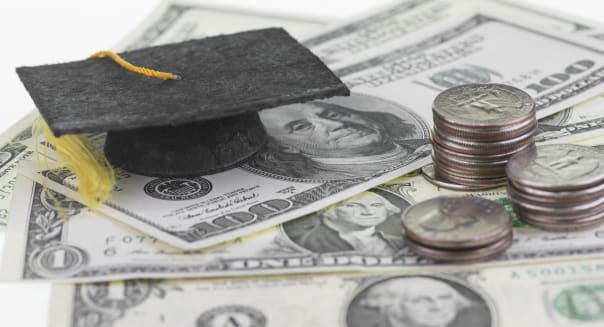5 Easy Ways to Reduce Student Loan Costs

By Odysseas Papadimitriou
America's higher education system is currently embroiled in a period of extreme flux, with budgetary concerns and an online education revolution fueling widespread change and uncertainty throughout the country. Perhaps the biggest issue facing students, institutions and government officials alike is what to do about the overbearing debt emanating from student loans.
Total student debt now surpasses an astounding $1.2 trillion -- roughly equal to the GDP of Mexico -- and nearly 7 in 10 graduates from the class of 2013 left campus owing money. According to the Institute for College Access & Success, the average indebted graduate of a four-year college has a balance of $28,400, which would take nearly five years of $500 monthly payments to pay off in the absence of interest.
%VIRTUAL-WSSCourseInline-899%Given how economically debilitating it is to enter the "real world" drowning in the red, public opinion supports legislative action that would make college more affordable and ease the burden on those currently struggling to repay lenders. According to a Wall Street Journal and CNN poll, 82 percent of the 1,000 respondents nationwide were in favor of "providing access to lower-cost student loans and providing more time to those who are paying off their debt." The initiative was far more popular among respondents than fighting ISIS, reforming the tax code and limiting carbon emissions.
The 40 million Americans who currently have outstanding student loan debt are no doubt looking for more tangible, immediate support. With that in mind, here are a few tips that will help you reduce what you owe and save a bit of money along the way.
1.Look Into bank discounts. Wells Fargo and Discover -- which collectively control more than $20 billion in private student loans -- have begun giving borrowers a break in the form of reduced interest rates, extended repayment terms and, in certain circumstances, forgiven balances. Given how private student lenders have come under fire for oppressive, inflexible terms of late, the move is sure to generate a great deal of good will for the two financial institutions -- perhaps prompting competitors to follow suit.
2.Consider a career in public service. Public service jobs aren't known for being financially rewarding, but if you didn't major in a field conducive to finding a job that allows for the quick repayment of your student loans, committing yourself to the public good has the potential to benefit your bottom line.
Those who make 120 monthly student loan payments while employed by a federal, state or local organization or a tax-exempt nonprofit are eligible for the complete forgiveness of their remaining debt. The viability of this approach obviously depends on your vocational interests and just how much you'll owe after 10 years, but it's something worth considering if your balance will be significant.
3.Get paid to move. Just like local governments provide tax incentives to businesses that move to classified development zones, certain municipalities across the country are using financial perks to attract cash-strapped young people who are looking for a place to put down roots.
Kansas, for instance, has put $15,000 in student loan repayment assistance on the table for folks who move to specified Rural Opportunity Zones. Similarly, Niagara Falls, New York, is giving $7,000 to people who live in particular downtown areas.
4.Transfer a balance to a credit card. Most people aren't aware of this, but you can transfer most types of debt -- including mortgages and student loans -- to a credit card. This is a particularly attractive option if you have a relatively small balance remaining and have been able to make on-time payments up until this point, thereby accruing an excellent credit score.
You can get a credit card that offers zero percent interest on transferred balances for 15 months and charges neither an annual fee nor a balance transfer fee. Using such a card with a credit card calculator to ensure you are debt-free by the time regular rates take effect has the potential to save you a significant amount of money in finance charges and help you get out of debt faster.
5.Financial literacy must start early. This isn't so much a tip for managing existing student loans, but rather a forward-looking statement about mitigating unsustainable debt in the future. Given how financially burdensome higher education has become and the perhaps decreased value of a college degree, financial instruction at young ages is more important than ever.
Young people must be given the tools needed to make important financial decisions before they are tasked with selecting a college, choosing a major and figuring out how to pay for it all. Making such decisions in the absence of complete information is a recipe for disaster, so incorporating financial literacy education into high school curricula, at the very least, is something schools should give major consideration to moving forward.
Ultimately, college campuses are supposed to be bastions of free speech and new ideas -- not black holes of debt. If we want the American dream to continue to be alive and well in the years to come, taming our societal student debt problem is a must.
Odysseas Papadimitriou is CEO of the personal finance websites CardHub and WalletHub. He previously was a senior director at Capital One.
